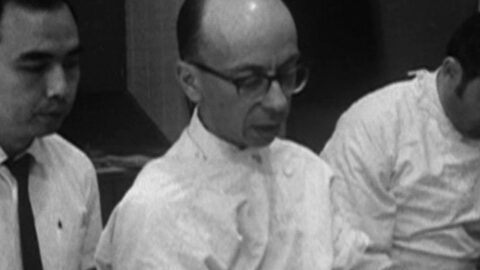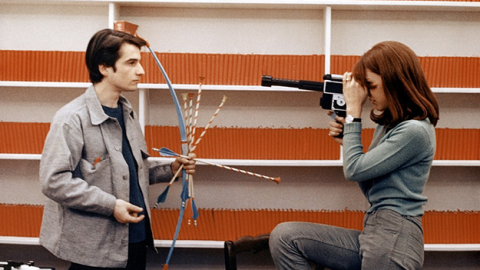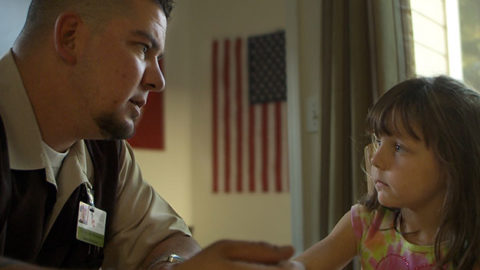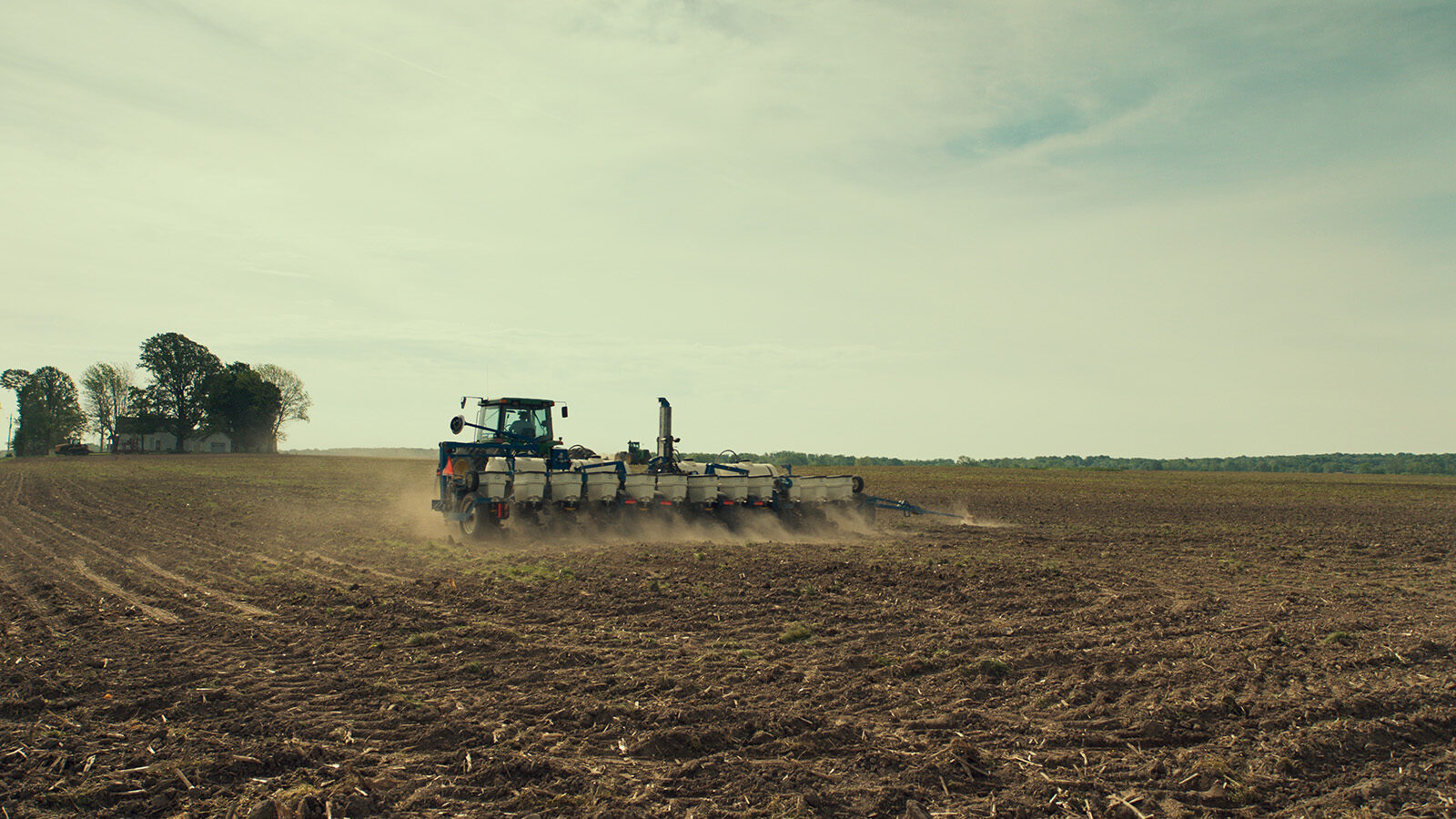
Intimations of Mortality
Something has to be done about the bench. The scene is the Monrovia Lions Club in Monrovia, Indiana, where a meeting is being held. A concerned woman, flanked by a man in shirtsleeves who is somewhat paying attention, would like to raise the matter of the bench. First of all, it needs to exist. The club’s 100th anniversary looms, and she is proposing to allocate funding to build a commemorative bench in town. Perhaps near the library, where another bench is currently slated to be built, thereby providing a pleasing logistical and visual symmetry. There’s a certain amount of back-and-forth as the case is made for construction, and oddly, momentarily unmade. Then the apparent leader of the meeting, another woman who will later be spotted browsing a gun shop, moves the motion forward: the club sets aside $500 for the project. Something has been done about the bench.
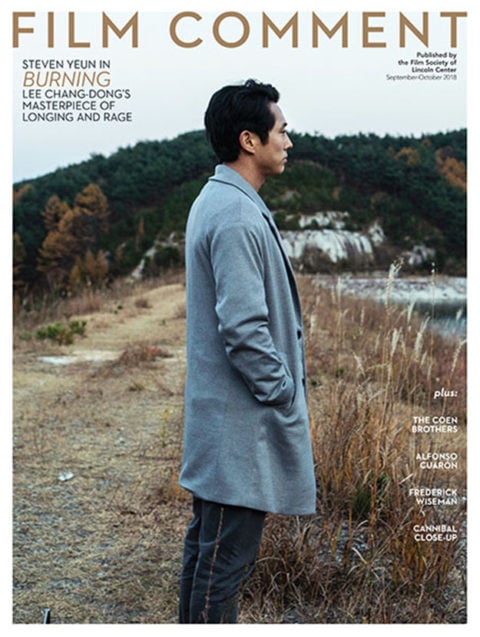
This is not an uncommon scene—either in budget meetings across America, or in the manifold films by Frederick Wiseman that survey the care and upkeep of our country and its citizenry. Yet as I watched this particular exchange—which takes place in Wiseman’s 44th film, Monrovia, Indiana, premiering in Venice and screening in the main slate of the New York Film Festival—divergent notions took hold in my mind regarding its significance. On the one hand, it seemed the epitome of a healthy civic process in working order: a volunteer group engaging, on a minute level, with its hometown, and showing how every bit of help adds up to a warm embrace of community. But as the Lions Club members hashed out the details of exactly where the bench might be built, and the pros and cons of the precise placement, a phrase had crept into my head: rearranging the deckchairs on the Titanic. Weren’t there bigger fish to fry? What was all this really for? Is this meeting the picture of civilization and local self-government, or in all the fussing is there a hint of desperation?
That is absolutely not intended to denigrate the Lions Club or its charitable deeds. It is in fact a hallmark of Wiseman’s open-text films that multiple readings apply, and that none are forced upon us—the procedural and the symbolic and the unanswered and, yes, the humorous all come nested within one another. Yet in Wiseman’s visit with Small-Town America—on its face one of his most straightforward endeavors—an unnerving sensation of obsolescence, or even a kind of decadent oblivion, crops up again and again, and perhaps did not emerge from nowhere. Monrovia, Indiana is constituted primarily from one rural town’s public spaces and their implicit sense of potential—council meetings, churches, fairs, kaffeeklatsches. Innocent enough, but along the way it poses some indelicate but sincere, pressing questions about American identity today, and the gap between what it is and how it perceives itself, and between the present and the past.
That might seem a somber framing for one of Wiseman’s most beautiful films. A droll montage of cattle blinking at the camera leads the film off, before we’re transported within view of roadsides, fields, barns, houses, a modest main drag, motorcycles, and cars. The daydream-ready wide blue skies and humming silences bespeak promise and peace, echoed throughout the film, in addition to efficiently scaling out the distances that define the area. On the heels (or hooves) of that opening rural orientation, Wiseman brings in other key institutions: a Bible reading group, with talk of tribulations and, in that talk, a sense of how generations have dealt with them; a high school class that’s a comfortable slice of tedium, its teacher going on about decades of “dominance” in basketball championships; and a town council meeting about a housing development that would bump up the thousand-strong population. These opening glimpses add up to a cross-section of a day in the life of a slice of America named Monrovia, as assembled by a visiting filmmaker.
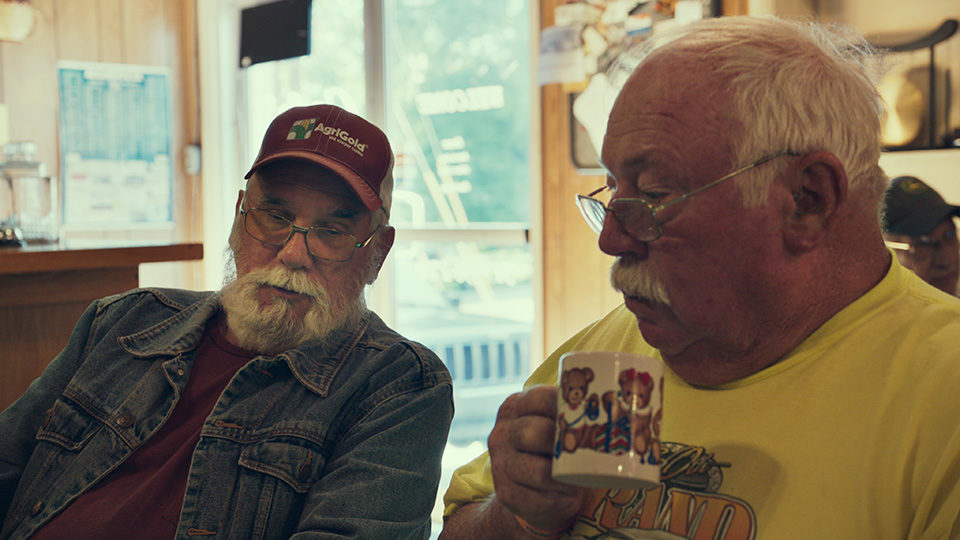
What immediately ensues suggests both that Wiseman’s comic sense is as wicked as ever, and that he can’t ignore what’s staring us in the face. A Masonic lodge is the next destination, less a locus of power inspiring paranoid conspiracy theories than a men’s clubhouse with charitable leanings—and, as immediately becomes apparent, a greying and dwindling membership. The occasion is a ceremony honoring an elderly Freemason in longtime good standing: a leader in regalia presides, a laser printer visible behind him on a table; the room, no matter what angle Wiseman finds, evokes empty classroom more than temple. Speeches are read aloud, haltingly, laboriously, from pieces of paper, not from memory; some members seem unsure exactly where to stand, or what to do next. It all feels less like an ancient order than the rehearsal of a school play (which closely recalls something Wiseman shows us elsewhere, a band in a gym making their droopy way through the theme from The Simpsons). These Masons care, no doubt, and their family members are present to take pictures, but there’s a nagging sense of going through the motions of something half-remembered. It’s hard not to imagine one model of community well on the wane here, and to worry that, in another generation, people just might not show up.
Quite a scene to place early in the film—even if, it must be said, the focus arises out of Wiseman’s tendencies. In his interest in institutions, he gravitates to social services and groups that by their nature reveal the vulnerabilities of a community even as they reflect its resilience. His 1999 masterpiece Belfast, Maine has its share of aging and beleaguered citizenry, as its heart-aching mosaic of a New England seaside town assembles before our eyes. In Jackson Heights (2015), too, returns like a refrain to the immigrants and other minorities who are seeking help to enter, or simply to remain peacefully, in the community whose values they share. But with this sequence in Monrovia, Indiana, Wiseman is reminding us that those values require upkeep, and he is reflecting upon what tradition means, or is. More than once in this newest film did I think of an earlier Wiseman film sometimes taken as an oddity or outlier—Canal Zone (1977), about a Panama town of military-related expats, who diligently uphold and recreate American habits, sports, and traditions in microcosm. That sociocultural work of maintenance is a concern, even an anxiety, that recurs throughout Wiseman’s oeuvre—how we pass down knowledge, or, put another way, maintain our greater selves—and it arguably vibrates at the center of Wiseman’s very project of chronicling. How do we keep this whole thing going, anyway?
It’s a question that has occurred to many Americans over the past couple of years under the rule of a presidency and party demonstrating little regard for our democratic institutions. But—despite a grimly amusing moment when town council members disagree over the meaning of “collusion” versus “collaboration”—it does not feel as if Wiseman is directly addressing our current crisis. On the contrary, a lot of Monrovia, Indiana is quite uneventful, ordinary, maybe even boring, which has always been another aspect of Wiseman’s genius (how else would we know what people really wear to meetings, or to life?). People chat in a coffee shop (or in a gun shop) about their ailments and who died. Shoppers mill about a supermarket where a seamless audio pastiche renders the particular inferno of incessant PA announcements about a gut-busting cheese-product sale. A barbershop and hair salon yield snap portraits of bullet- headed yeomen and one middle-aged woman in a state of absolute blissful relaxation. (The population, it can be noted in conspicuous parentheses, is overwhelmingly white; the only previous Monrovia I knew was the capital of Liberia.) There’s even a dose of the kind of humor you might find in a small-town newspaper comic strip: a scene of a haggard couple shopping for mattresses cuts to an overelaborate wedding ceremony between much younger, much fresher-looking newlyweds. And finally, now and forever, we return to the municipal council debating that housing development, or the placement of a hydrant, with a tough-but-firm councilwoman proclaiming their duty to be a worthy “steward” of the community—a moment that, in times like these, moistened my eyes a little.
Mundane goings-on, yes, and thus true to life and perhaps especially to the sedate rhythms of Monrovia. But the utopian tone that emerges in Wiseman’s cultural cycle of the past 10 years (at its apex in last year’s Ex Libris: The New York Public Library) is conspicuously absent, nor is there quite the untroubled democratic bustle of a Central Park (1989). On the contrary, at the very center of Monrovia, Indiana somewhere between the tattoo parlor and the hemp oil booth at the country fair, Wiseman sets off the equivalent of an explosion in our minds. And maybe poses something of a riddle. The sequence in question begins in a veterinary office—a chubby dog gets a rub, another gets a tongue-lolling teeth-cleaning. But then preparations begin for anesthesia on a boxer dog, and then for some sort of operation centered on its tail, which is not the stub one might ordinarily see on this breed. Wiseman has never been shy about how humans manhandle animals, and—hold your breath—within a minute, we’re shown the dog’s tail being shaven, sliced to half its length, and sewn up. It’s a shock, even as we’re aware this procedure must occur every day in vets’ offices across the country. But why is it here, in Monrovia, Indiana, and in such a prominent position—the halfway mark, the before-and-after fulcrum of a two-hour-20-odd-minute film? Who needs this?
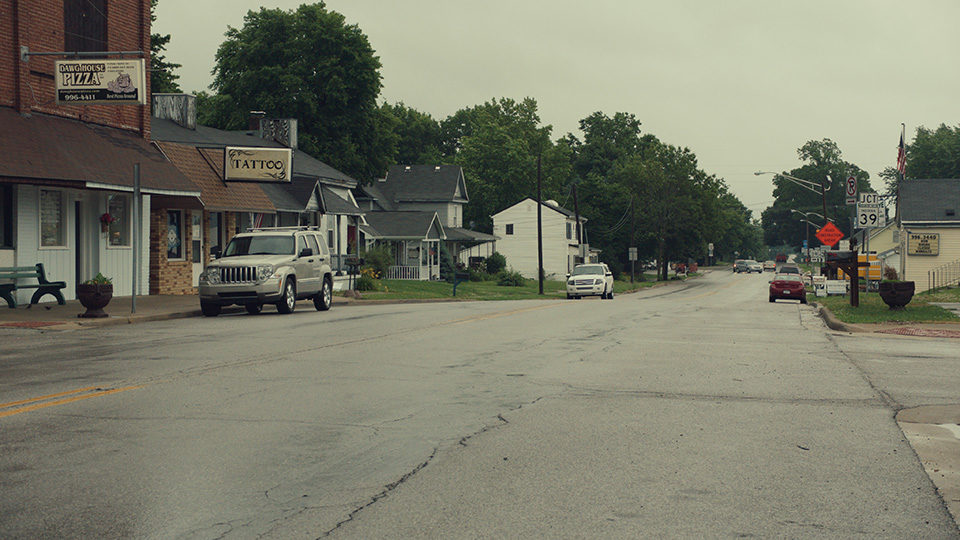
The filmmaker might simply respond that this is what happened when he was there. But the more I thought about the operation—which appears intended to fashion the boxer’s signature nub—the more it began to escape its literal, physical reality and acquire the complexity of a Zen koan: the tale of the tail, if you will. Why are boxer tails like that? Because we cut them. Why do we cut them? Because we do. It is, in other words, a custom, cousin to a tradition, and probably few of us know its reason for being. And that in turn leads one to the corollary, which Wiseman’s mature gaze does not spare us: this is a tradition that—whatever the pleasing, cosmetic, illusorily born-that-way result—spills blood to maintain. And with a single, seemingly incongruous episode in a vet’s office, we’re asked simply to reflect on the status quo we see around us, and how permanent or “natural” it really is. (And maybe, if you’re feeling grim and this is the Indiana of A History of Violence more than A Christmas Story, the bloody backstory to any status quo.) There’s probably also an emasculatory theme here too—but one metaphor at a time.
There’s little else like this scene in the film, aside from glimpses of the corralling and marking (for slaughter?) of some very vocal pigs, and the tattooing of a human or two (and maybe—sorry—the making of a pizzeria sausage roll). Mostly in Monrovia, we glide through scenes of comity and conversation. At worst, people might ramble on a little too long—whether it’s the snake oil saleswoman (well, hemp oil) who claims her product cures every ailment under the sun (while saving Haiti to boot), or the self-identified maverick at a roadster show recounting past triumphs and the prices he paid for this or that, with a Mayhewvian numeric detail that Wiseman clearly appreciates. Yet this car guy seems to fall in with a certain valedictory cast given off by the film—no one seems to be listening to him much, and he’s effectively saying goodbye to his best years (but, like the high school teacher going on about past basketball dominance, can’t help dwelling). And if the entire film perhaps traces a certain life cycle, it’s by opening with those expectant cattle and closing with a funeral—one comprised of a reverend’s aggressively mundane oration (visible in the long shot background: two exit signs) and then a burial under lots and lots of dirt.
Already I feel I have been directing Wiseman’s images toward a more determined meaning than they might immediately suggest. And it is entirely possible to read its series of observed encounters and processes as the decent, orderly workings of a community that they are, in a genuinely lovely stretch of farmland. It’s not a snapshot of the Midwest, like some other documentary portraits, where you’re just meant to wonder if America is waving at us or drowning. But with the deftest of touches, here and there, Wiseman underlines that America is a story not just lived but told and retold and maintained. It’s the mother of all his institutions, which he portrays equally for what they uphold as for how they are themselves held up. Monrovia is still kicking, but it’s getting on in years, and there in their council meetings and support networks as everywhere, what we become is up to us.
Closer Look: Monrovia, Indiana screens in the New York Film Festival and opens on October 26.
Nicolas Rapold is Film Comment’s editor-in-chief.



